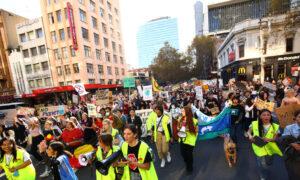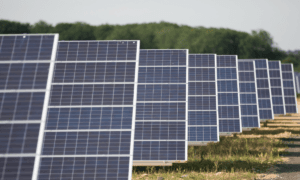Australia’s First Blue Carbon Farm in the Works
Millions of dollars and hectares of land will be dedicated to the new project which aims to generate saleable carbon credits.
Australia’s first blue carbon farm is coming to Queensland’s Sunshine Coast, set to create a sprawling mangrove ecosystem on the lower Maroochy River floodplain at Yandina.
The operation aims to restore the river’s ecosystem, encouraging seagrasses, tidal marshes, and mangroves to thrive and generating carbon credits which can be sold or used towards net-zero targets.
Coastal blue carbon is the carbon captured by living coastal and marine organisms and stored in coastal ecosystems.
Sunshine Coast Council, who has partnered with Unitywater on the project, is aiming to go carbon-free by 2041.
Work will involve introducing tidal waters into two council-owned sites totalling 165 hectares.
Sunshine Coast Council Mayor Rosanna Natoli said the project would be the first of its kind in the nation.
“This puts our region at the forefront of an emerging industry, and by generating our carbon credits locally we can enjoy the positive impacts,” she said in a statement.
“This means a healthier Maroochy River with more fish breeding grounds, stronger biodiversity, protected flood storage, opportunities for our traditional custodians to care for country, more tourism opportunities and places for our community to explore and experience nature.”
Sunshine Coast Council Division 9 and Environment and Liveability Portfolio Councillor Maria Suarez said the knowledge gained from the project would then be shared with landholders interested in using their own properties for blue carbon farming.
“Cane farming has been a mainstay in the [region] for generations, but with challenging market conditions, farmers need new ways to generate income,” she said.
“The Blue Carbon Pilot Project is about nurturing opportunities for our landholders, for our local economy, for our community, and for our environment—all contributing to a sustainable Sunshine Coast.”
Member for Nicklin Rob Skelton said he backed the project, which he believed would generate income, protect habitats and threatened species, and enhance water quality while providing recreational use of land.
The project has received more than $2 million (US$1.29 million) in funding from the Australian government’s Department of Climate Change, Energy, Environment and Water, with a $360,000 contribution from the Queensland Government’s Land Restoration Fund.
Unitywater chief executive officer Anna Jackson said she was pleased about possible outcomes of the works at Yandina Creek Wetland.
“By re-establishing the Yandina Creek Wetland environment through careful water management, we have been able to return vital plants and micro-organisms to the region which remove nutrients like nitrogen and phosphorous from our waterways,” she said.
“Thanks to these plants and micro-organisms, we have been able to remove an estimated 5.3 tonnes of total nitrogen and 0.5 tonnes of phosphorous from our waterways per year.
“Beyond the environmental benefit, we are saving our community millions of dollars over a 25-year period by making the most of these natural processes to go beyond compliance into environmental stewardship.”
Carbon Credits Need Credibility
Catherine Lovelock, from the School of Biological Sciences at the University of Queensland, says the concept of blue carbon is that it can conserve and restore ecosystems that store carbon.
Challenges to its success, she says, can range from costs to credibility.
“In 2015, $350 million was estimated as the cost to restore Australia’s fish habitats,” she said in a statement online, noting that selling sequestered carbon could be one solution to this.
Lovelock said blue carbon farming was a step towards financial incentives for farmers to restore wetlands, so long as adequate regulation allowed for proper handling.
“Carbon markets need to have high levels of integrity to function as intended, otherwise ‘junk’ or fraudulent carbon credits can be bought and sold, which does nothing to reduce the effects of climate change as well as reducing the value of all carbon credits as confidence of buyers is eroded,” she said.
“Because of this, carbon farming methods are highly prescriptive to meet criteria that are designed to ensure high levels of integrity.”
Coastal Habitats Lock Carbon In
Blue carbon habitats hold 50 to 100 times more carbon in their soils and remove 10 to 30 times more CO2 from the atmosphere per year than vegetation habitats.
Often, carbon from the atmosphere is held by sea grasses, mangroves, and salt marshes in coastal habitats, absorbing it from the atmosphere and sequestering it.
If the habitats are undisturbed, the carbon can be held for thousands of years.





